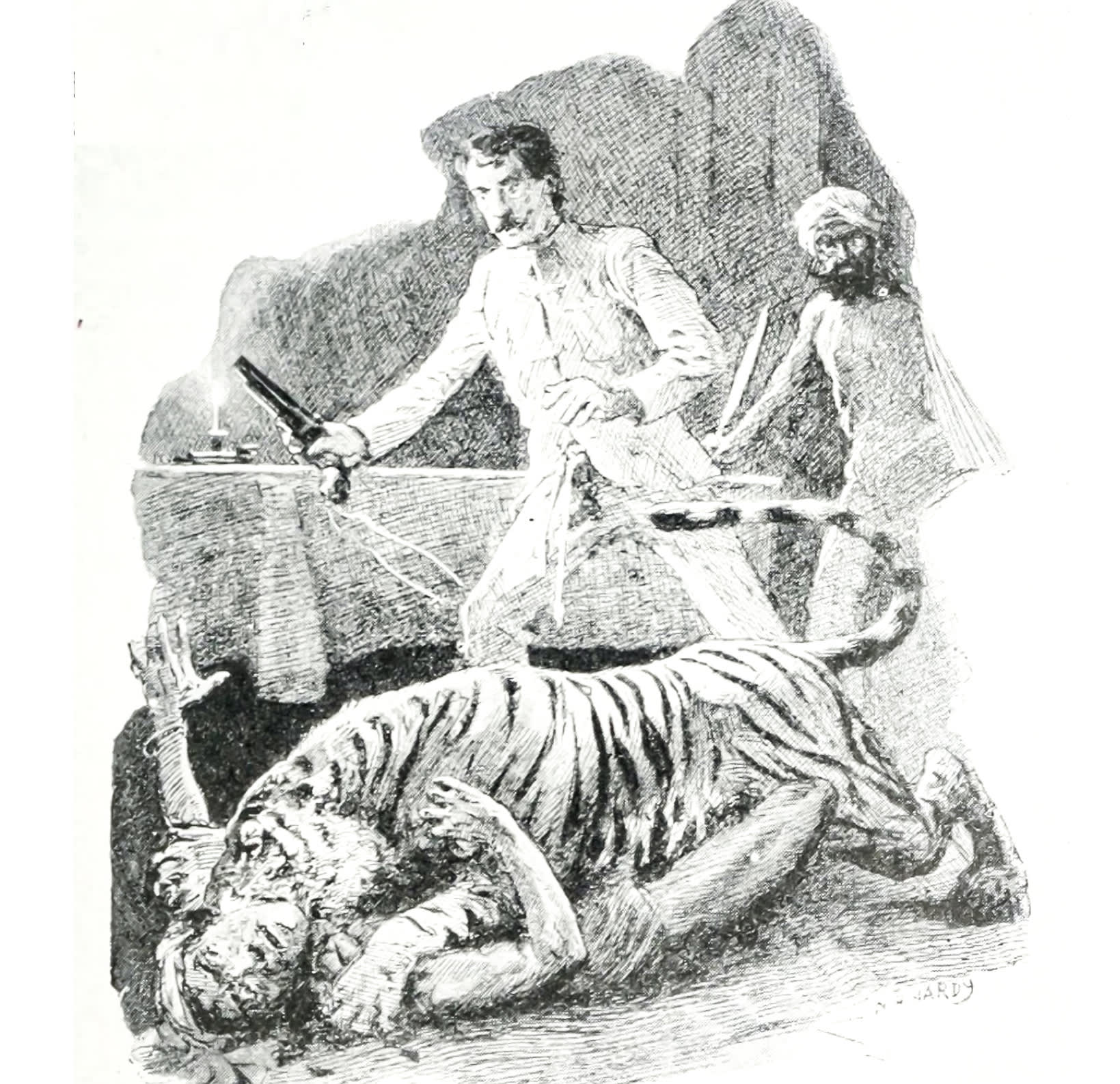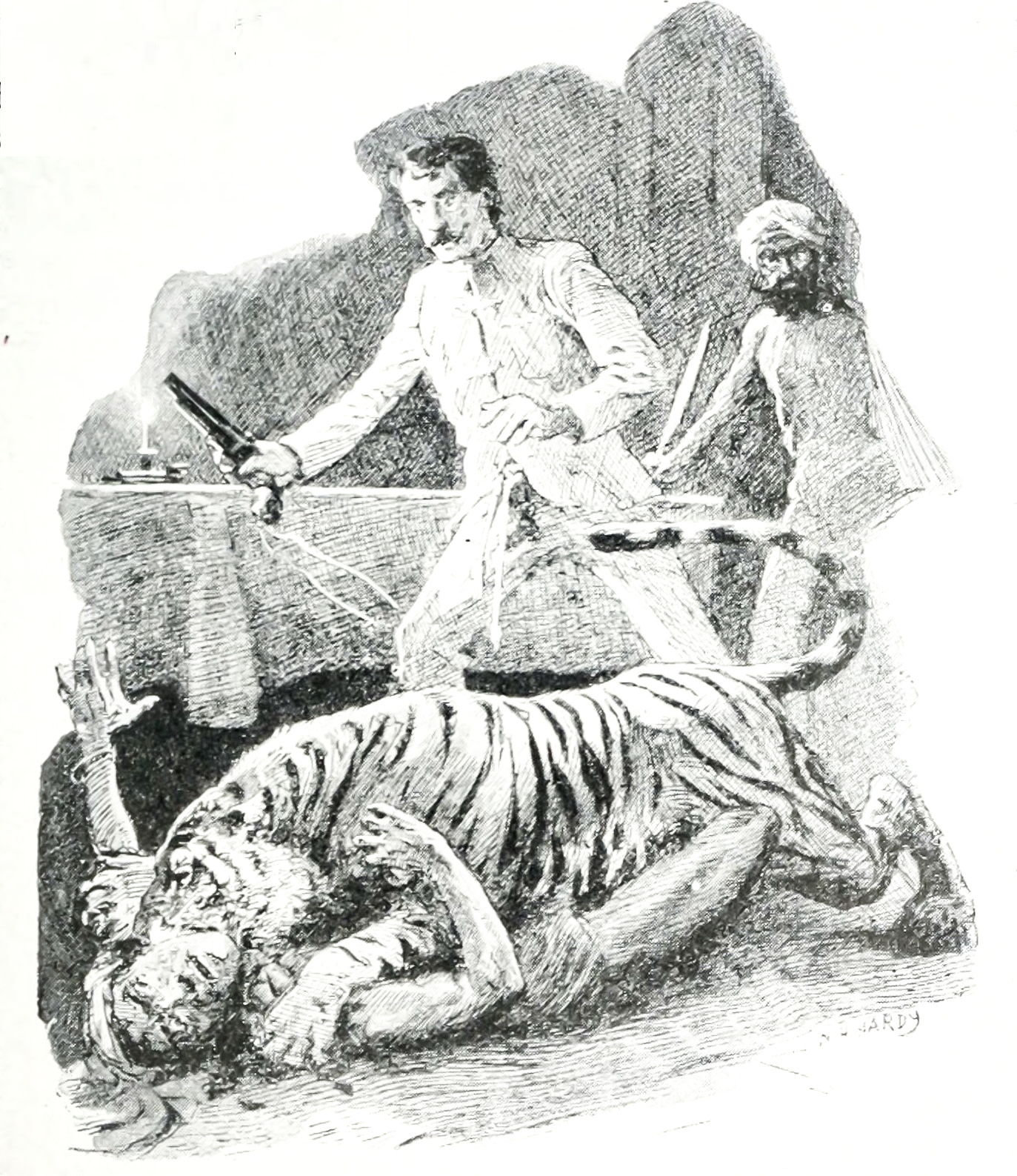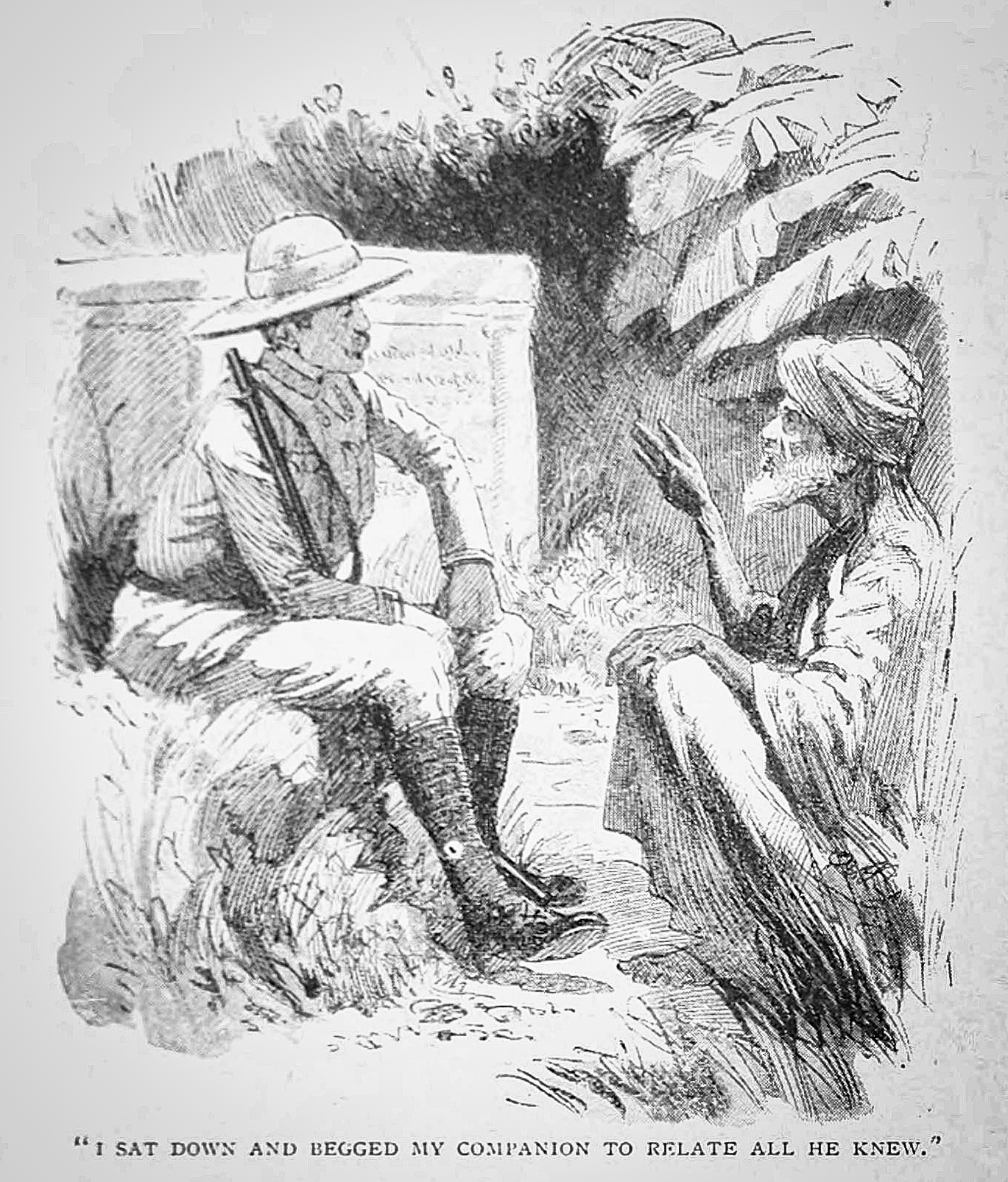 Listen to this article
•
15:34 min
Listen to this article
•
15:34 min
“Sahib!,” said the shikari, “it is the grave of a tiger, who saved the great Lord Sahib’s life by sacrificing his own. It is in my care.” “A tiger!” cried Colonel Fitz William Thomas Pollok as he peered at the marble slab on one side of a sarcophagus which bore the above inscription in English, Hindustani, and Marathi.
The year was 1864, the British had managed to overrun the last rebel outposts in the central Indian highlands in the aftermath of the Ghadar. Colonel Pollok, a senior officer of the Madras Staff Corps, was riding in the backcountry in search of game with his sole companion, the old “mussulman shikaree”. Pollok was a highly regarded “sportsman” — as big-game hunters were called —who would go on to author four books on his hunting and travel experiences, the last published in 1900.
The duo came across an old abandoned military outpost. Most of it had been reclaimed by the jungle, but a small enclosure with a grave caught Pollok’s eye. That’s when the old shikari, Mohammad Essuf, announced he was caretaker of the grave, and narrated an extraordinary account. Pollok penned it down in first person in the voice of the officer whom Selim had saved and had the story published in an old monthly called The Wide World Magazine. And there, within the thousands of yellowing pages of a 121-year-old volume of this obscure magazine, this incredible tale has laid buried since.
When Essuf was a young man he was employed by JO, a young British Army officer. They were the same age and went on many hunting expeditions together. On one such jaunt JO came face to face with a large tigress just as he turned his horse around a sharp bend in a narrow pass. The tigress was carrying a cub in her mouth, and another little one was walking behind. Since JO did not expect to come across anything bigger than a peafowl in that area, he was carrying a smoothbore firearm with a small bullet unsuitable for shooting larger animals. Faced with an immense tiger, JO, in the shock of the moment let off his smoothbore. The tigress dropped the cub, and crashed against the rock and boulders and stumbled out of sight. Once JO and Essuf had regained their composure they noticed that one of the cubs was dead, but the other — a male, “the size of a spaniel pup” — was alive and only superficially wounded. JO decided to take care of it.
It was getting dark. Unwilling to face an angry, wounded tigress looking for her cubs, the two hastily made off for their camp. JO brought the cub home and named him Selim. He took care of his wounds and put Selim with the four pups of his Poligar dogs. The dazed, injured cub snuggled on the straw bed with his new mates. JO feared that the mother of the Poligar pups would react violently on finding a strange young cat amidst her own. However, he was relieved to find her licking Selim’s wounds and that “all her youngsters were amicably disposed towards their foster-brother”.
Selim’s wounds healed and he grew rapidly into a large beautiful tiger. He moved into JO’s room and slept on a mat. But Selim would often creep into JO’s bed and nestle close to him. With much time spent in fun and games with his foster-siblings, his mannerisms were like them, and he would follow JO wherever he went.
A large tiger can be a nuisance when he insists on sleeping in your bed. Eventually, JO managed to train Selim to sleep at the foot of his bed in his own charpoy. When JO was transferred to Poona, Selim went with him. The brigadier at the Poona Cantonment was not too pleased to have an almost full-grown one-year-old tiger roaming free in the cantonment and ordered JO to either tie Selim up or shoot him. “Destroy my loving Selim I would not, and to tie him up was almost impossible, but I barred up the old zenana part of the bungalow, and in it during the day poor Selim lay… But on moonlight nights, when everybody was asleep, many a gambol had I with the tiger, my dogs, and my horse, all together.”
But the days of carefree relaxation were about to end. Disaffection against the white man’s rule was mounting in India, and the ominous clouds of a rebellion were brewing in the Maratha hinterland. Being familiar with the Maratha countryside, JO was put in hot pursuit of the rebels and was soon “the best-hated man in the whole province”. The rebels wanted to get him before he got them.
“One night, as I lay asleep, I was awakened by a loud growl and a spring. I leaped out of bed, and then it became evident that Selim had seized somebody or something, whom he was worrying right royally… As the tremendous scuffle went on, punctuated by screams of pain, I lit a candle, and seized a double-barrelled pistol which I had kept under my pillow. Then, on looking round, I found my usually gentle Selim with every hair on end furiously shaking a naked savage who was covered with grease — presumably the better to elude capture after he had done his assassin’s work.”
JO managed at last to pacify his “saviour” Selim. The would-be-assassin confessed to being a rebel tasked with killing JO. The man disclosed the names and whereabouts of his accomplices and JO got hold of them all.
Once things calmed, JO was transferred back to his old camp. Selim by then was a large adult male. When Selim was three, a man-eating tiger took residence in the vicinity of the camp. JO had been trying to get him ever since he had been declared a man-eater. One day, JO was back in the area where he had found Selim as a cub. But now this area was the man-eater’s territory. Essuf and Selim were with him, loitering behind.
“Suddenly I stumbled, and as I did so, some large animal sprang clean over a rock, and would have seized me by the head but for my fortunate fall.” JO’s rifle fell and the man-eater charged. JO steeled his nerves to face the beast with nothing but a large shikar knife in hand. Just as the charging man-eater was about to make his final leap, his spring was suddenly stopped midway by another huge body that metamorphosed into JO’s vision, felling the man-eater to the side. Amidst deafening roars and plumes of dust, JO saw that Selim had pinned the man-eater by the throat. But the old tiger wouldn’t go down to the young challenger without a fight. “Selim, though smaller, looked double his size, with every hair on end.”
The violent duel continued, terrible roars rang across the hills, but Selim’s initial grip proved difficult for the old tiger. The man-eater who was in his death throes, in a final act of desperation to extricate himself from Selim’s grip, managed to get his two hind legs under Selim who by then was on top of him. “With one vigorous backward kick”, the old tiger “ripped up Selim’s stomach”. JO “screamed aloud in utter horror and grief”. Dying though he was, Selim would not let go until the man-eater expired.
Satisfied that he had ended the threat to his master’s life, an exhausted Selim fell over on his side. Holding a mortally wounded Selim’s head in his arms, JO began crying uncontrollably. Selim, mustering the last bits of his strength, raised his head and “feebly licked JO’s hands and face”. And as JO and Essuf poured water down Selim’s throat, the tiger relaxed, and within a few minutes the red-ember of his eyes faded away as his spirit ebbed.

They brought Selim to camp, where JO buried his friend in a grave. Securing the tomb with an enclosure, he erected a memorial with a commemorative trilingual plaque which read:
“SACRED TO THE MEMORY OF SELIM, A TIGER, WHO LOST HIS LIFE IN THE DEFENCE OF HIS MASTER, J.O. “FAITHFUL UNTO DEATH”
JO made young Essuf promise to look after Selim’s tomb long after he was gone. It was a promise Essuf kept even when the cantonment was consigned to the ravages of time and he became a grey-haired man.
But who was JO? Some hints to his identity lie in the text, the locales of his postings, the fact that he was an Assistant Political Agent, that he was part of the Bheel corps, and that his field service years lead up to 1857. Researching these clues threw up a few probable names: Colonel John William Willoughby Osborne, once the Political Agent In Rewa, Gwalior, and Bhopal, or a Lieutenant Colonel J T Osborne an active military man in the area in the 1840s. Could it be ‘The Bayard of India’ Sir James Outram himself, an inveterate hunter, the Political Agent of Mahikantha (a collection princely states in Bombay Presidency) in 1837 and the founder of the Khandesh Bhil Corps? Perhaps I am completely off the mark. Then there are other questions — where is Selim’s final resting place now? What happened to his grave after 1864 when Pollok last saw it? Nobody knows. I have found some old forgotten tombstones and graves in my journeys to India’s forests over the years, so perhaps Selim’s tombstone too survives somewhere, forgotten and forlorn, overrun by bushes and creepers, waiting to be rediscovered? Perhaps we will never know. But what will always live on is the story of Selim, the gallant tiger who was “faithful unto death”.









